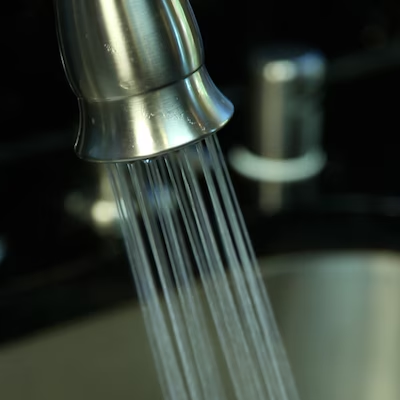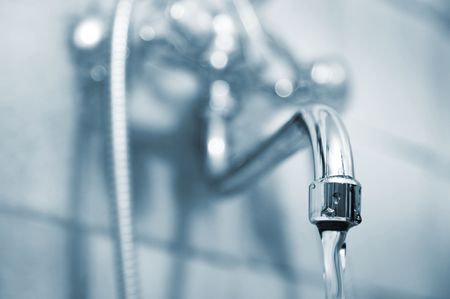Detailed Guide to Resolving a Leaky Tap: Skilled Tips
Detailed Guide to Resolving a Leaky Tap: Skilled Tips
Blog Article
We have uncovered this article pertaining to How to Fix a Leaking Tap Without Getting Professional Help below on the net and accepted it made perfect sense to quickly share it with you on my blog.

Introduction
A leaky faucet is not just annoying but can likewise lose a substantial amount of water and result in boosted energy costs. In this step-by-step overview, we'll stroll you via the procedure of fixing a leaky tap, allowing you to save water and money while keeping your plumbing system.
Collecting Devices and Products
Before you begin, gather the necessary tools and materials for the repair. You'll commonly need a flexible wrench, screwdrivers, substitute washing machines or seals, plumber's tape, and a dustcloth or towel to tidy up any kind of spills.
Shutting Off Water
Situate the shut-off shutoff for the impacted faucet and turn it clockwise to turn off the water system. If you're unable to locate the shut-off shutoff, you might need to turn off the main supply of water to your home.
Disassembling the Tap
Use a screwdriver to remove the handle of the faucet, exposing the interior parts. Depending on the kind of faucet, you may need to loosen a cap or collar to access the valve assembly.
Examining for Damage
When you've revealed the shutoff assembly, check it for any signs of damages or wear. Usual perpetrators of a dripping faucet consist of damaged washers, O-rings, or seals.
Replacing Faulty Components
If you identify any damaged or worn-out parts, thoroughly remove them utilizing a wrench or pliers and replace them with new ones. Be sure to make use of the proper size and sort of replacement parts for your faucet.
Reconstructing the Tap
After changing the defective components, meticulously reconstruct the faucet in the reverse order of disassembly. Make sure that all parts are effectively lined up and tightened up to avoid future leakages.
Checking for Leaks
When the faucet is reassembled, transform the water supply back on and check the tap for leaks. If you notice any type of leakages, confirm the links and tighten them as required.
Guaranteeing Correct Functionality
After validating that the faucet is leak-free, test its capability by turning it on and off a number of times. Ensure that the faucet operates efficiently and with no unusual noises or resistance.
Tidying up
Finally, clean up any type of particles or spills from the fixing process and dispose of any type of old or broken parts properly. Leaving the workspace spick-and-span ensures a professional surface to your repair work.
Verdict
Fixing a leaky tap is a fairly straightforward do it yourself task that can save you money on water bills and protect against additional damage to your plumbing system. By following this detailed guide, you can take on the repair work with confidence and take pleasure in the advantages of a leak-free faucet.
Fixing a Leaking Tap: Causes, Solutions, and Water Conservation
Causes and Signs
Worn-Out Washers: The tap washer, rubber or metal, creates a seal within the tap assembly. Over time, the old washer can deteriorate, leading to water seepage and a dripping tap. High Water Pressure: Excessive water pressure can strain tap components, causing leaks. The forceful water flow exerts pressure on the washers and other sealing mechanisms, resulting in a dripping tap. Faulty O-Rings: O-rings, usually made of rubber, provide a watertight seal between moving parts of the tap. If the O-rings become worn or loose, they can cause water to leak, resulting in a dripping tap and potential water damage to your property. Signs of a Dripping Tap
Audible Dripping Sounds: If you hear the sound of water droplets hitting the sink or basin, it’s a clear indication of a dripping tap. Puddles or Stains: Notice any puddles of water or stains around the tap area or on the sink surface. These signs suggest a dripping tap that requires attention. Reduced Water Flow: A dripping tap can affect the overall water flow, resulting in reduced pressure when using the tap. Gather the Necessary Tools
Adjustable spanner Screwdriver – flathead or Philips’s head New washers Towels or rags Turn Off the Water Supply
Find the isolation valve beneath the sink or by the tap and turn it clockwise to shut off the water supply.
Disassemble the Tap
Use a screwdriver to carefully remove the tap handle, exposing the internal components. Take note of the order and arrangement of the parts as you disassemble the tap. This will aid in reassembling it correctly later on. (We recommend taking photos on your phone for a no-fuss solution).
Inspect and Replace the Washer
Inspect the washer located at the bottom of the tap assembly. If it appears worn out or damaged, replace it with a new washer of the correct size and type. This simple replacement can often resolve the dripping tap issue.
Tips for Responsible Water Usage
Regular Inspection and Maintenance: Conduct periodic inspections of all taps in your home to identify potential leaks or drips. Timely repairs prevent water wastage and maintain the efficiency of your plumbing system. Install Water-Efficient Taps: Consider replacing old taps with water-efficient models that are designed to minimise water consumption. Look for taps equipped with aerators and flow restrictors to regulate water flow without compromising functionality. Conscious Water Usage: Develop mindful habits such as turning off the tap while brushing your teeth or soaping your hands. Additionally, use full loads when running dishwashers and washing machines to maximise water efficiency. Monitor Your Water Bill: Keep track of your water consumption by regularly monitoring your water bill. Any sudden increases may indicate a leaking tap or other issues that require attention. When to Seek Professional Help
Persistent Leaks: If your attempts to fix the dripping tap are unsuccessful or the problem keeps recurring, it may indicate an underlying issue that requires professional attention. Complex Repairs: In cases where the tap assembly is intricate, or the repair involves specialised knowledge, it’s advisable to seek professional help to ensure the problem is resolved effectively. https://proudplumbingandgas.com.au/blog/a-complete-guide-to-fixing-a-leaking-tap/

Do you really like reading up on How to fix a leaky tap and save water? Make feedback below. We'd be delighted to listen to your responses about this blog post. Hoping that you visit us again later on. Sharing is nice. Helping others is fun. Thank you so much for your time invested reading it.
Website Report this page